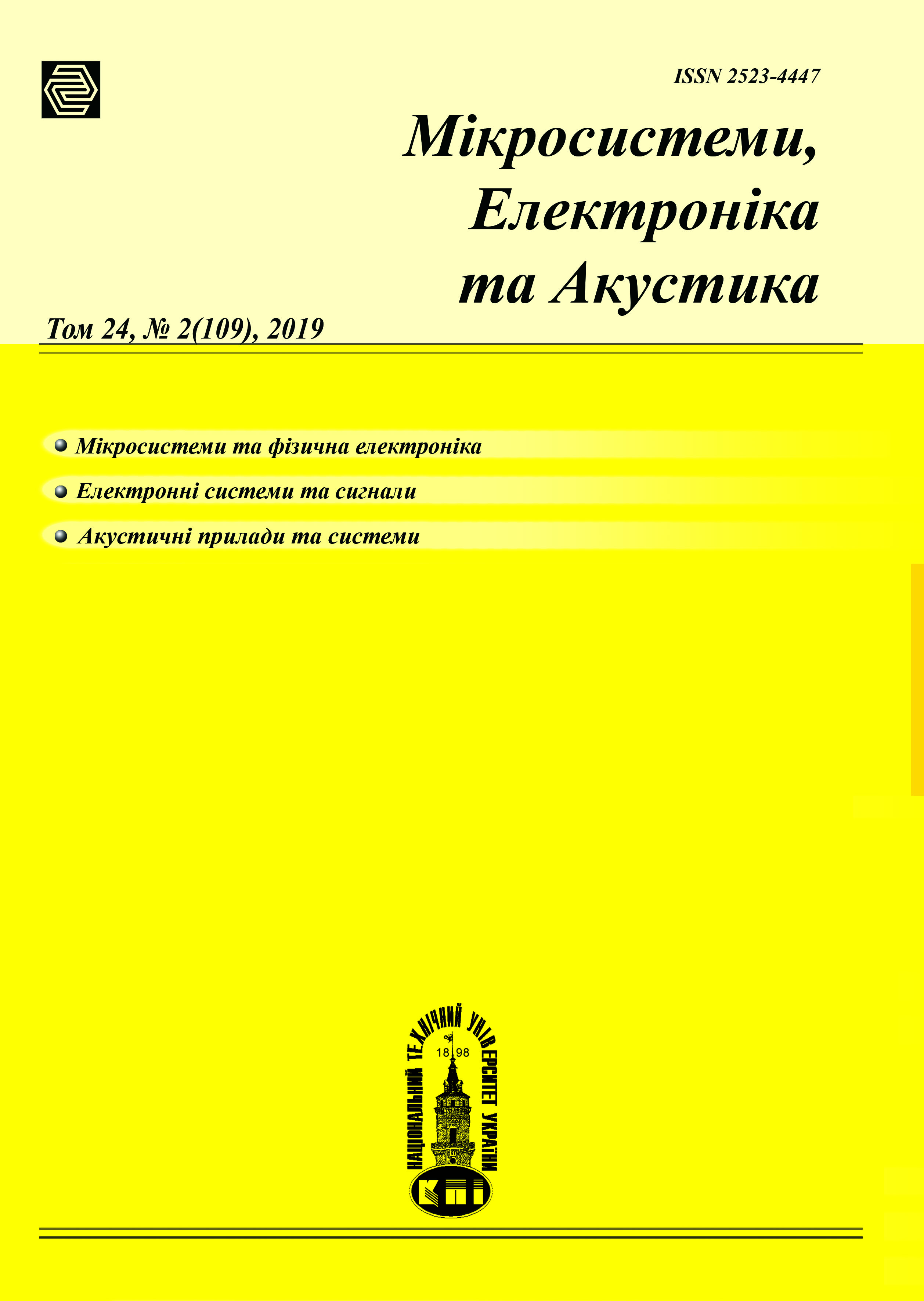Second Order Sliding Mode Control of the Output Voltage of an Alternative Power Source in a Single-Phase Grid
Main Article Content
Abstract
The object of the study is an alternative power source of sinusoidal voltage, consisting of a PWM bridge frequency converter, a single-phase linear output transformer with an additional output LC-filter, which is connected to a non-autonomous grid. An additional inductance is inserted into the primary winding of the transformer to reduce current ripples. The mathematical model of this system, which is described by ordinary differential equations, is constructed. Usual assumptions are used that the system of equations is linear, and the current of the magnetization of the transformer can be neglected. Therefore, a transition to a simplified circuit for replacing a single-phase transformer is possible. The synthesis of the control law by means of the forced introduction of the traditional sliding mode for minimizing the influence of perturbations on the source output voltage is carried out. Conditions of the existence of a sliding mode with the use of the known method of equivalent control are obtained. In the formation of a sliding surface, a sliding mode of the second order was used, which made it possible to reduce the number of quantities of electric variables that require direct measurement. The proposed strategy allows achieving more robustness, acceptable steady state error, exponential convergence, and good matching of the output voltage of the source for the autonomous consumer network. This strategy eliminates the need to use an accurate current sensor, which reduces the cost of the frequency converter and facilitates practical implementation. The features of the functioning of an alternative energy source with this type of sliding mode in a system with real parameters of electric circuits are investigated. The comparisons are presented as simulations among conventional sliding mode (first order) control and second order sliding mode in a sliding surface at different test conditions, such as stationary state, grid voltage perturbations and output load disturbances.
The results of digital simulation are presented. Simulation was performed taking into account the constraints inherent in the real object of power electronics and influencing the possibility of technical implementation of the developed control strategy. In the mode of minimum dissipation there is a very slight deterioration of the spectral composition of the voltage, which can be neglected. The possibility of reducing the effect of load changes on the form of the output voltage has been considered, taking into account the constraints specific to real systems, and has been verified using digital simulation.
Ref. 14, fig. 4
Article Details

This work is licensed under a Creative Commons Attribution 4.0 International License.
Authors who publish with this journal agree to the following terms:- Authors retain copyright and grant the journal right of first publication with the work simultaneously licensed under a Creative Commons Attribution License that allows others to share the work with an acknowledgement of the work's authorship and initial publication in this journal.
- Authors are able to enter into separate, additional contractual arrangements for the non-exclusive distribution of the journal's published version of the work (e.g., post it to an institutional repository or publish it in a book), with an acknowledgement of its initial publication in this journal.
- Authors are permitted and encouraged to post their work online (e.g., in institutional repositories or on their website) prior to and during the submission process, as it can lead to productive exchanges, as well as earlier and greater citation of published work (See The Effect of Open Access).
References
Ewald F. Fuchs, Mohammad A.S. Masoum. Power Conversion of Renewable Energy Systems.Springer Science+Business Media, LLC 2011, 707p. DOI: 10.1007/978-1-4419-7979-7
Smart (Solid-State) Transformers Concepts.Challenges. Applications. J. W. Kolar et al. Swiss Federal Inst. of Technology (ETH) Zurich, 2016. [Available online] https://www.pes-publications.ee.ethz.ch/uloads/tx_ethpublications/2016_PCIM_SST_Keynote_PCIM_2016_as_published_JWK_130516.pdf
Yang Y., Blaabjerg F. “Overview of Single-Phase Grid-Connected Photovoltaic Systems,” Electric Power Components and Systems, pp. 1-10, 2015, DOI: 10.1080/15325008.2015.1031296.
Mikhal's'kiy V. M., Zasobi pídvishchennya yakostí elektroyenergíí na vkhodí ta vikhodí peretvoryuvachív chastoti ta naprugi z shirotno-ímpul'snoyu modulyatsíêyu [Means for improving the quality of electricity at inputs and outputs of frequency and voltage transformers with, Kyiv: Ínstitut elektrodinamíki NAN Ukraíni, 2013. ISBN: 978-966-02-6727-5.
Power Electronic Converters. PWM Strategies and Current Control Techniques. Edited by Eric Monmasson. ISTE Ltd and John Wiley & Sons, Inc. 2011.- 608p. ISBN: 978-1-84821-195-7
V. Utkin, J. Guldner, J. Shi. Sliding Mode Control in Electro-Mechanical Systems. Second Edition. Taylor & Francis Group, LLC. (2009). DOI: 10.1201/9781420065619.
Leonid Fridman, Jaime Moreno, Rafael Iriarte (Eds.) Sliding Modes after the First Decade of the 21st Century. State of the Art 2011 Springer-Verlag Berlin Heidelberg. 598p. ISBN: 978-3-642-22163-7 DOI: 10.1007/978-3-642-22164-4
Ahmad Taher Azar, Quanmin Zhu. (Eds) Advances and Applications in Sliding Mode Control systems. Springer Int. Publ. Switzerland, 2015.-592p. ISBN: 978-3-319-11173-5 DOI: 10.1007/978-3-319-11173-5
S. V. Emel'yanov, S. K. Korovin, L. V. Levantovskii, Novyy klass algoritmov skol'zheniya vtorogo poryadka [A family of new regulators based on second order sliding mode], Matem. Mod., Vol.2, No.3 ,1990, pp.89–100. URL: http://mi.mathnet.ru/eng/mm2344
A. D. Theocharis. J. Milias-Argitis. Th. Zacharias. Single-phase transformer model including magnetic hysteresis and eddy currents. Electrical Engineering Vol.90. Issue 3, pp.:229–241. (2008) DOI: 10.1007/s00202-007-0071-5
B. K. Perera, S. R. Pulikanti, P. Ciufo & S. Perera, "Simulation model of a grid-connected single-phase photovoltaic system in PSCAD/ EMTDC," in POWERCON: IEEE Int. Conf. on Power Syst. Tech, 2012, pp. 1-6. DOI: 10.1109/PowerCon.2012.6401435
Mysak T.V. Formuvannya synusoyidal`noyi vykhidnoyi napruhy dzherela zhyvlennya z vykhidnym transformatorom u kovznomu rezhymi [ Formation of a sinusoidal output voltage of the source of power supply with the output transformer in a sliding mode].- Pratsi Instytutu Electrodynamiky NAN Ukrainy, 2016. – № 43. – pp. 91-96.
S. V. Drakunov, D. B. Izosimov, A. G. Luk'yanov, V. A. Utkin, V. I. Utkin, “The block control principle. I.”, Avtomat. i Telemekh., 1990, no. 5, 38–47; Autom. Remote Control, 51:5 (1990), 601–608 URL: http://mi.mathnet.ru/eng/at5365
Levant A. Sliding order and sliding accuracy in sliding mode control. Int. Journal of Control, Volume 58, 1993 - Issue 6, pp.1247-1263 DOI: 10.1080/00207179308923053





